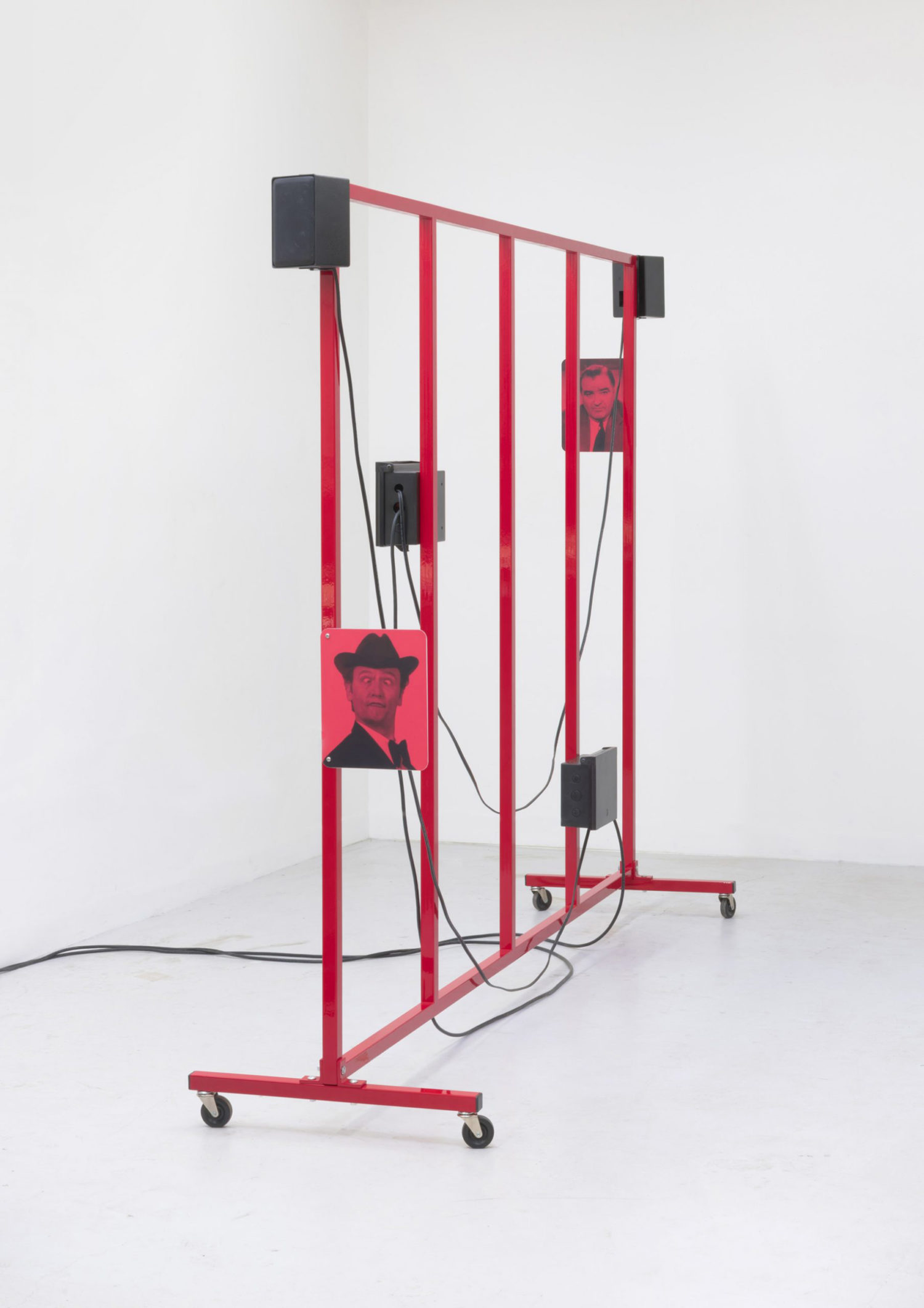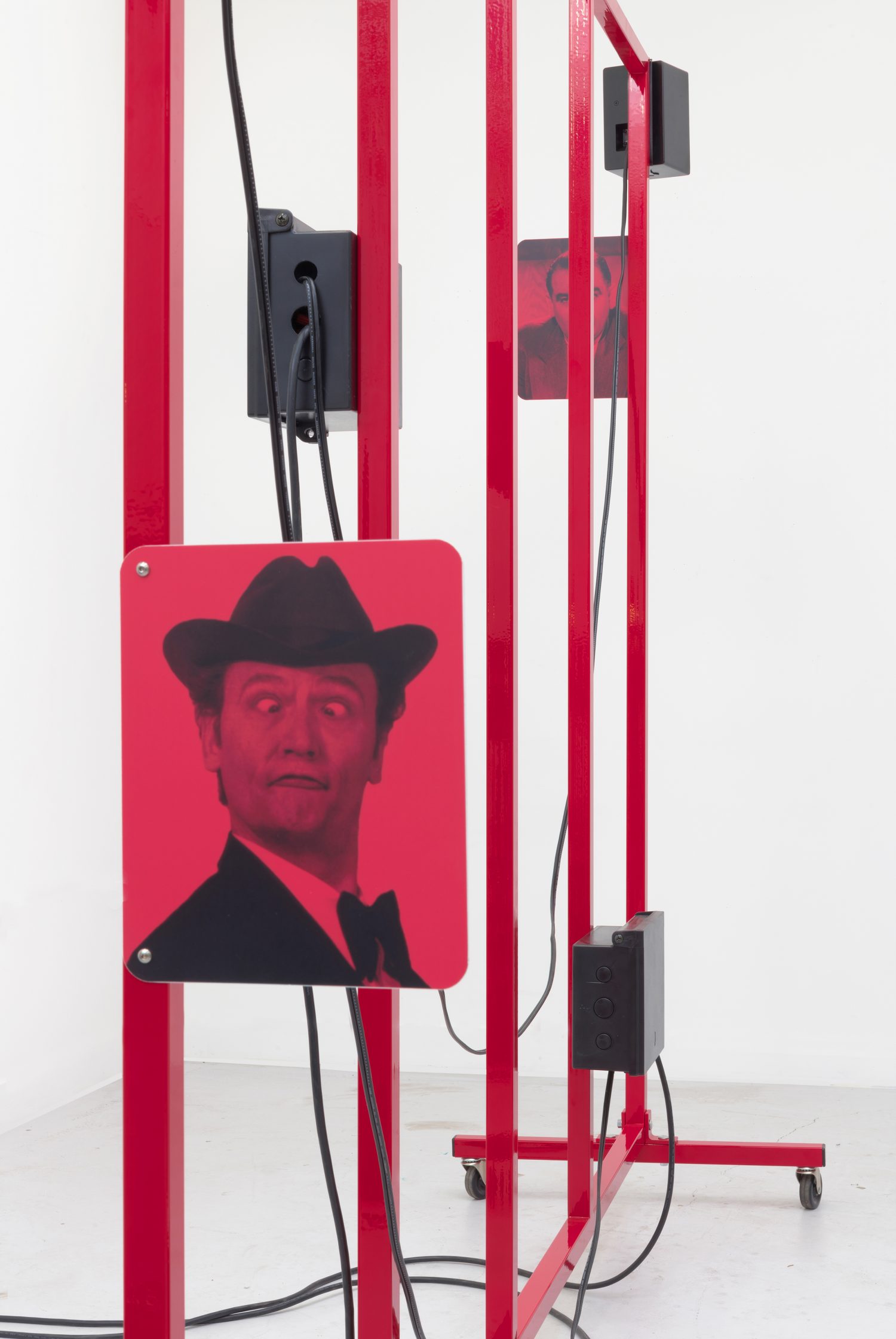
Audio: 2 hours
76” x 24” x 91”


Red World is presented as an absurdist play, a staged farce that sets into motion a dialectical process pairing two characters. These cultural and historical figures combine their voice, language, applause, laughter, and politics, and reveal the inclusive and exclusive position of their power. The voices in Red World are from an American comedian from Indiana and a Senator from Wisconsin, both representing the 1950’s cold war era. The audio is compiled from found audio recordings, video footage, radio plays, and television appearances. Red World incorporates a two-channel audio emitted from two speakers attached to a framework that resembles a partition or structural barrier. Mounted on wheels, it can be repositioned and staged within a room. The playback, speakers, wires and cables are attached to the frame and exposed as part of the work. The audio script for each channel is structured so the sound alternates between the channels or overlaps in juxtaposed or comedic scenarios.
Skelton was a comedian and entertainer who was popularized through early radio and television transmissions. His radio plays, variety shows, stand up, and movies were a form of populist humor in the US for many decades. Known for his characters were based on his own experiences, and were generally a hobo, farmer, an uneducated man, and others that drew attention to class differences, income inequality, education, societal protocols, and other social scenarios of that era, and in company with other comedians such as Sammy Davis Jr. or Don Rickles. They would not only draw attention to the cultural and societal conventions, but would many times offer simple wisdom, lampoon, or critiques of high society and established belief systems. There are blatant passages that were steeped in sexism, homophobia, racism, drunkenness, and other patriarchal points of view popular of the era. His pantomimes carried out the humor with physical slapstick, falling down, crude or childish actions, and with physical props and sounds effects.
McCarthy was the primary instigator behind a nation-wide scare tactic who blacklisted individuals believed to be associated with Communism and treason. His speeches and hearing were broadcast on radio and television in the late 40’s and early 50’s. His speeches, along with inside jokes, heard at the televised hearings drew applause from audiences as well as laughter. His language, as well as some of his associates’ language, is also steeped in homophobia, racism, and paranoia. It has been alleged that McCarthy was gay, but not openly, and his attorney Roy Cohn, was also believed to be closeted gay. Banter in the hearings made use of the term “Fairy” and the word “Pixie”. Both were considered a form of slang and generally used within a group that would recognize their meaning. “Fairy” referring to feminine gay, and then “Pixie” was later associated with that as well. McCarthy is known for alleging that numerous Communists and Soviet spies and sympathizers had infiltrated the United States federal government, universities, film industry, and elsewhere. Ultimately, the smear tactics that he used led him to be censured by the U.S. Senate. The term “McCarthyism” coined in 1950, was soon applied to similar anti-communist and other oppressive activities
In this parody McCarthy and Skelton demonstrate their conservative views through their political speeches, actions, and comedy into popular culture. The pungent contrast and overlapping content between a paranoid ideologue and innocent comedian is played out. The paranoia and sexism in their politics and entertainment is experienced, and their influence on politics and popular culture still remain today.